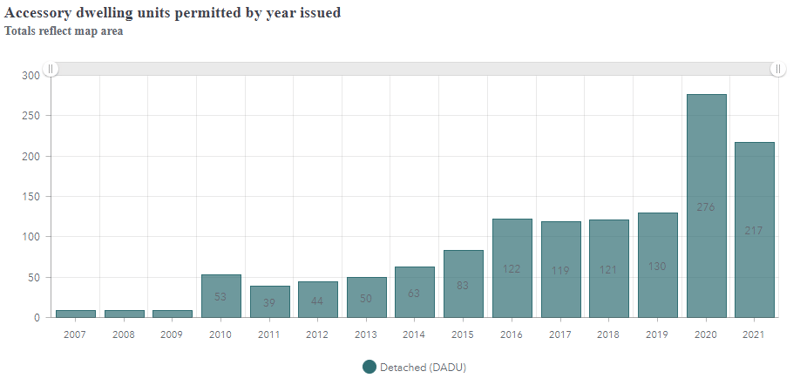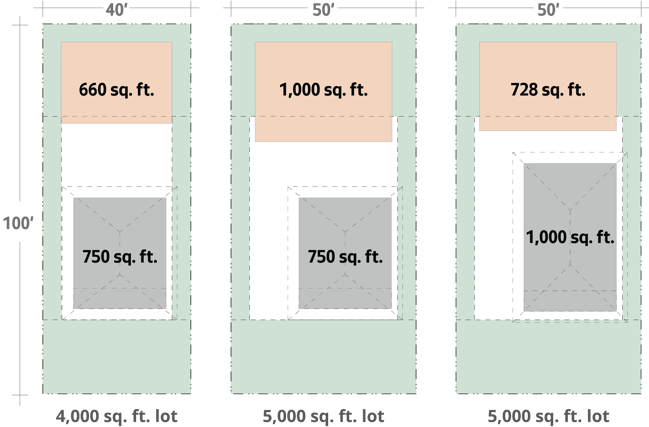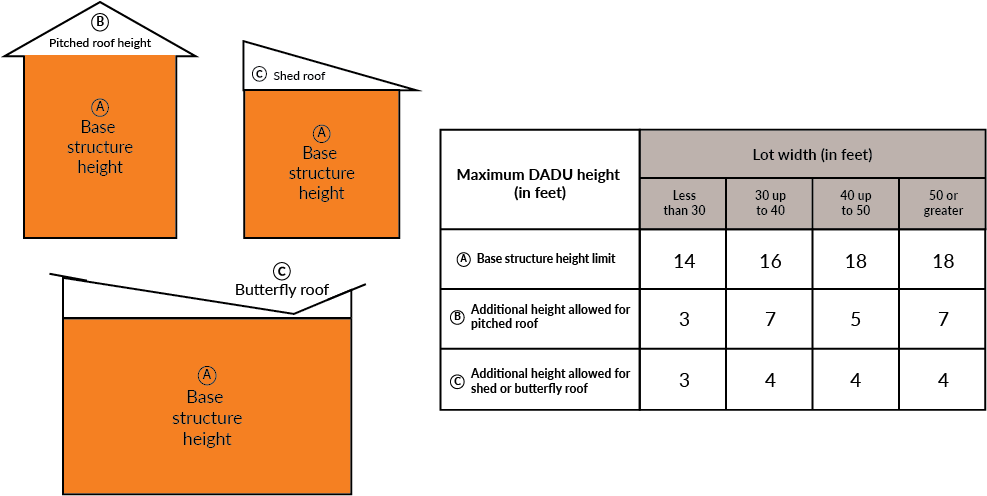BELLEVUE
40 percent of the total square footage of the residence for ADUs. Not less than 300 square feet or greater than 800 square feet. Owner occupancy required in one of the two units. One off-street parking space required. ADUs not currently allowed in new construction.
Learn more
KENT
If detached: 800 square feet or 33 percent of the size of the principal unit, whichever is smaller. If attached: not more than 40 percent of the principal unit.
One off-street parking space. One of the dwelling units must be owner-occupied for at least six months a year. Interestingly, Kent does allow ADUs in both new and existing single-family dwellings.
Learn more
EVERETT
75 percent of gross area of the principal unit or 800 square feet, whichever is less. Most have design standards requiring consistency with the primary residence. Owner must reside within either dwelling. Requires additional off-street parking stall unless within a quarter mile of a transit stop.
RENTON
No larger than 75 percent of the primary residence or 800 square feet, whichever is smaller. Owner must occupy one of the two units. Recent policy change to incentivize ADUs in new construction: In a subdivision of 10 or more new residential units, development fees for ADUs are waived by 50 percent and waived in full for every third new ADU. This incentive was extended through 2020.
Learn more
KIRKLAND
One accessory unit allowed per single-family dwelling. May be within or detached from the principal dwelling unit. The primary unit or the accessory unit must be owner occupied. An attached accessory unit cannot exceed 40 percent of the total area of the principal residence and the ADU. The size of a detached ADU may not exceed 800 square feet. The total area of all detached accessory structures on your property may not exceed 1,200 square feet plus 10 percent of the lot area that exceeds 7,200 square feet. The number of residents of the ADU and the principal dwelling unit combined must not exceed five unrelated individuals. One off-street parking space required, in addition to the two required for the primary residence. Primary entrance to the ADU must be clearly secondary to the main entrance of the principal unit.
Learn more
AUBURN
ADUs are not to exceed 50 percent of the primary residence or 950 square feet, whichever is less. They must match primary residence. One additional parking space must be provided and owner occupancy is required in one of the two units.
MARYSVILLE
15 percent of total lot in R4.5, R6.5, R8, WR R4-8; 20 percent of total lot in R12-28 and WR6-18 zones; or 80 percent of primary floor area, whichever is less. Legal owner must reside within either dwelling. Requires additional off-street parking stall.
SHORELINE
Size is limited to 50 percent of the size of the main dwelling. Owner occupancy required in one of the two units. One off-street parking space in addition to two for the main house.
Learn more
LAKE STEVENS
Size must be 50 percent of gross primary floor area or 800 square feet max, whichever is less. Legal owner must reside within either dwelling. One additional off-street parking space, in addition to existing SFR requirement.
SEATAC
City updated outdated ADU regulations this year and removed construction barriers to build with minimal impact in existing residential neighborhoods.
BURIEN
On December 2, 2019, the Burien City Council passed reforms to loosen the restrictions to build ADUs in single-family zones. Read the ordinance here.
See also: Burien Encourages Accessory Dwelling Units in New Reform [The Urbanist]
TUKWILA
Adopted regulations earlier this year to allow ADUs or DADUs up to 800 square feet in order to increase housing stock.
SNOQUALMIE
Has a Residential 2 (R2) zone that allows for the construction of duplex, triplex, quadruplex, attached townhomes of no more than 4 units, and small ADUs and DADUs.
SNOHOMISH
Size to be 50 percent of gross primary floor area or 800 square feet max, whichever is less. Must comply with city design standards. One unit occupied by the land owner. One additional parking space required, for a total of three parking spaces.
DUVALL
The city is in the process of reviewing, amending, and updating its ADU regulations with a targeted completion date and anticipated vote at a council in January 2019.
STANWOOD
Size to be 60 percent of primary residence or 900 square feet, whichever is less. Design elements must be consistent with the main house. Legal owner must reside within either dwelling. One additional parking space must be provided.
NORTH BEND
Updated their cottage residential regulations after a moratorium on their construction. Cottages must be under 1,500 square feet, clustered in development, and their design must promote a sense of openness and community. All homes must have easy access to a central common area or open space and, where
possible, be designed with a covered porch and primary area facing the common area to encourage interaction and community.
TACOMA
In March 2019, Tacoma legalized backyard cottages and relaxed restrictions on in-law apartments (ADUs). They are exempted from off-street parking requirements. The owner is not required to live on the property unless the ADU is used for short-term rentals. No minimum lot size. Allows for zero setbacks for DADUs on alleys.
Learn more
See also: Tacoma Adopts Exemplary Reform for In-Law Apartments [Sightline Institute]
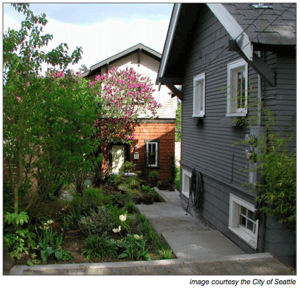 What is a backyard cottage?
What is a backyard cottage?
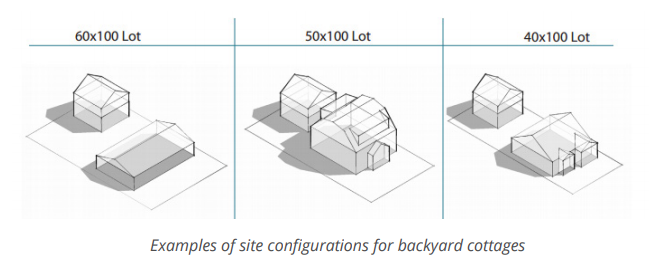 Seattle City Council
Seattle City Council